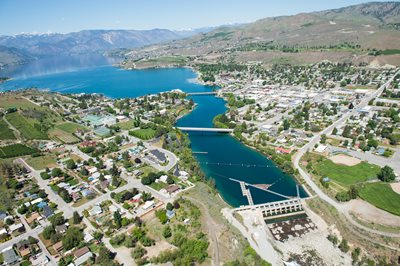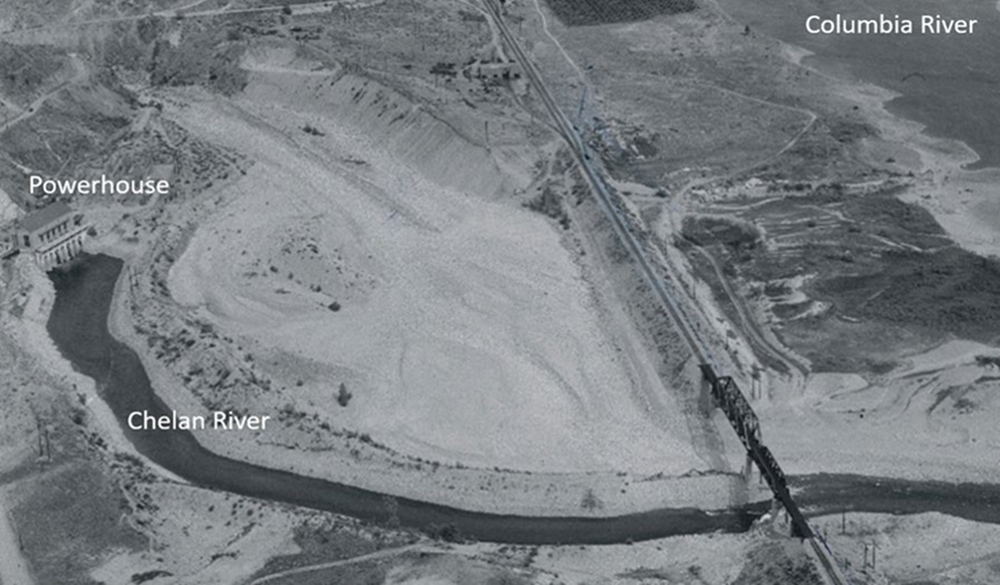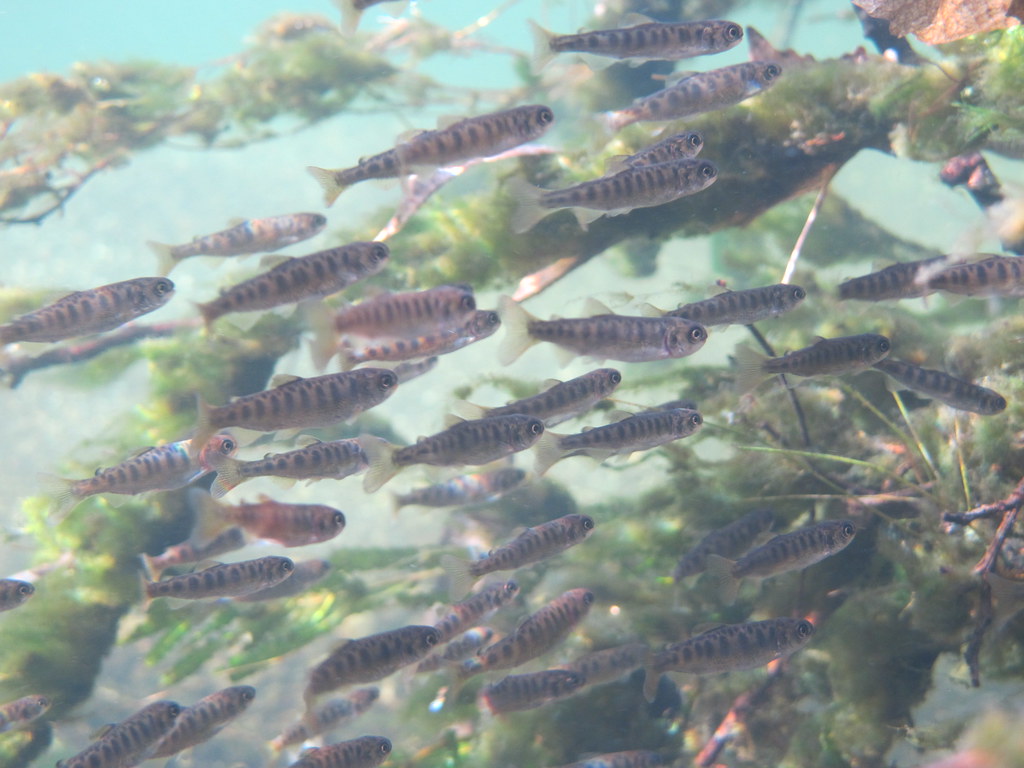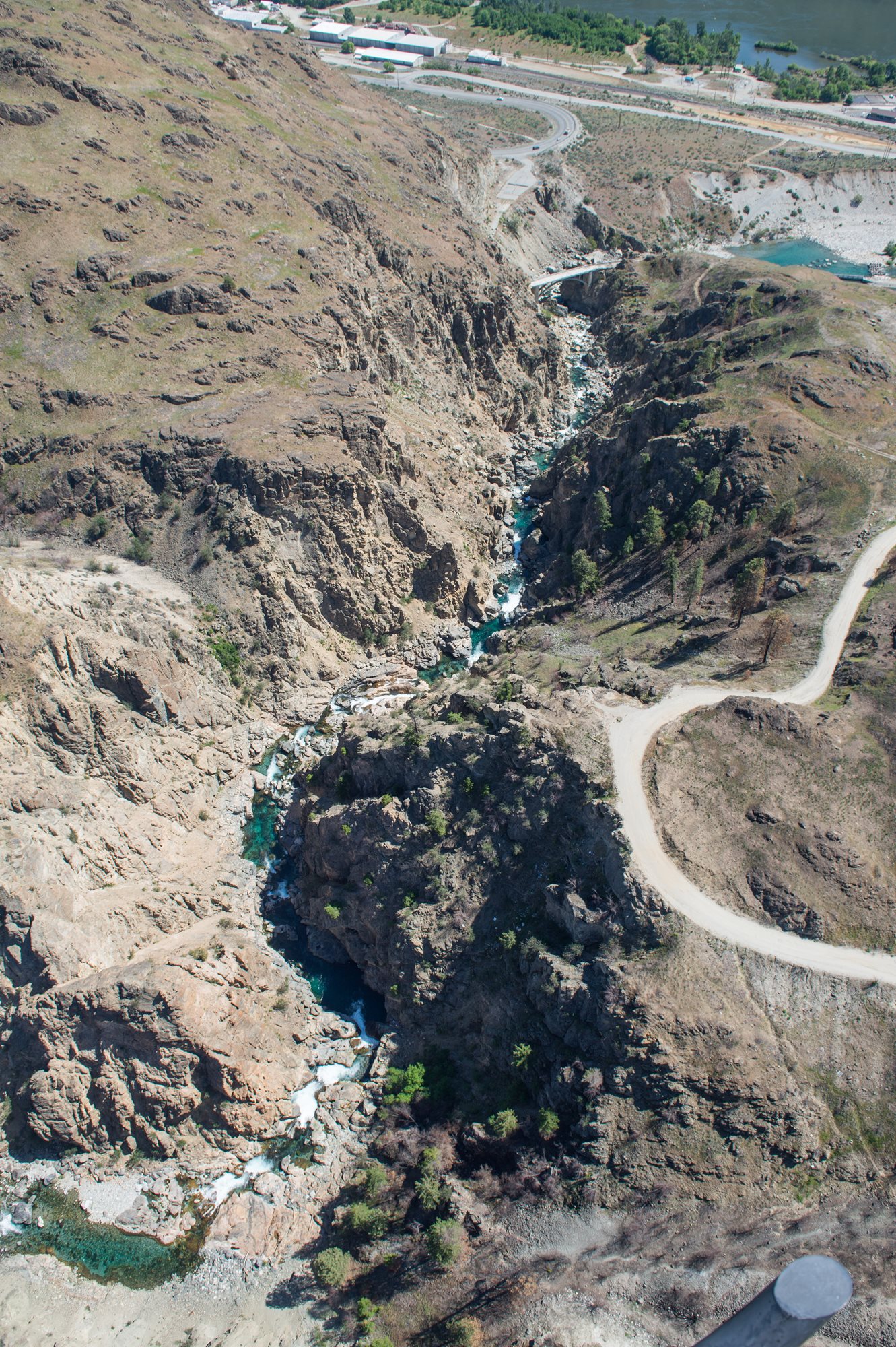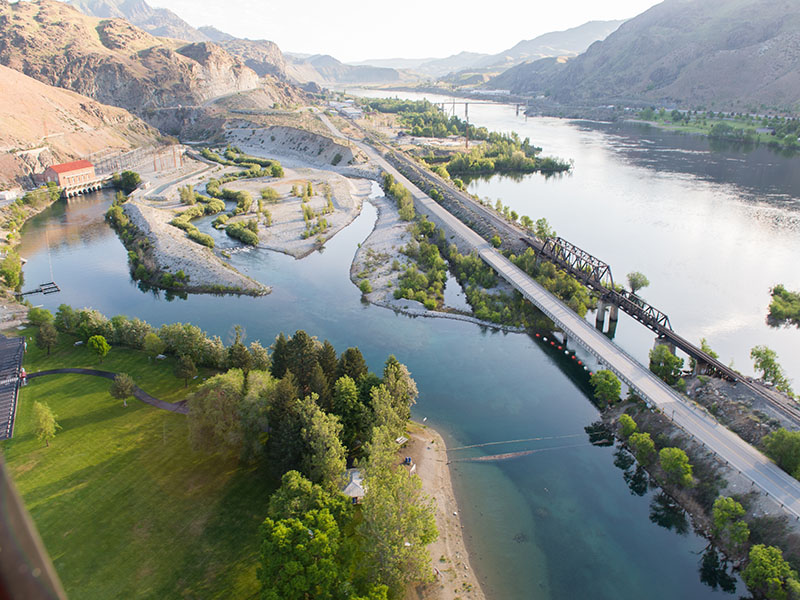
The Chelan River has some new inhabitants
Thanks to the efforts of the Chelan County Public Utility District (PUD) and its partners to restore and monitor the health of the Chelan River, there are now salmon returning to spawn in the lowest reach of the river. These efforts stabilized water flow and created habitat on the state's shortest river, which serves as a connector between the state's longest and largest natural lake, Lake Chelan, and the mighty Columbia River.
The PUD operates a hydropower dam project at the junction outfall of the lake to the river, which regulates the flow of water from the lake to the river under the dam's Federal Energy Regulatory Commission (FERC) license to produce power.
Based on the restoration work, science, and monitoring completed to date, the PUD is now asking Ecology if it makes sense to re-evaluate some of the water quality standards for this four mile river. The PUD is requesting we consider changing the aquatic life use designation from salmonid spawning, rearing, and migration to limited downstream migration on the upper and middle sections and to limited salmonid spawning, rearing, and migration in the lower section.
This isn’t the beginning of the story
Since 1892, a hydropower dam has existed in one form or another at Lake Chelan's confluence with the river. To explain the current water quality situation in the river, we are going to fast forward to the late 1990s. When it was time for the PUD to renew the FERC license to operate the dam, Ecology was asked to provide a Clean Water Act Section 401 Certification.
The headwaters of the Chelan River at Lake Chelan, where the river flows into the hydroelectric dam. Photo credit: Chelan PUD
A 401 Certification is Ecology’s opportunity to weigh in on federal projects to determine if the project will meet our state’s water quality standards. We developed the certification and required the PUD to implement riparian restoration actions and form a stakeholder working group. Also through the 401 certification, we required the Chelan PUD do a 10 year monitoring, evaluation, and adaptive management program to evaluate whether the river could support salmon spawing and survival.
In other words, we wanted the management program to answer — is it possible for native fish, including Chinook salmon and steelhead, to now make the Chelan River their home? The answer has proven to be a resounding yes!
Can salmon spawn here?
Based on historic information, the Chelan River was likely not salmon habitat because the water was potentially too warm and the river rarely had enough water flow to reach the Columbia River.
Before restoration work, the river ran dry along the mainstem Chelan River. It was instead piped through a powerhouse before flowing into the Columbia River. Photo credit: Chelan PUD
In the past decade, that has all changed. Now, the Chelan River flows year-round and there is new habitat available for salmon spawning. Summer Chinook are returning to the Chelan River to spawn. Steelhead populations are also improving due to these efforts.
Restoring the Chelan River ecosystem has been a group effort as part of the Natural Science Working Group, the stakeholder group that was formed because of the 401 certification. The group, made up of state and federal fishery managers, tribes, and stakeholders, looked at what is possible for the river.
So far, efforts to reach Washington’s water quality standards in the Chelan River include:
- Studying water temperature to inform the best location for a flow release structure to allow cooler water to move from Lake Chelan to the river.
- Constructing a flow release structure to move the coldest water from dam forebay into the river.
- Establishing minimum instream flows.
Young Chinook salmon
- Constructing a pumping station to provide flows for spawning salmon and steelhead.
- Ensuring flows adequately meet the biological needs of spawning and juvenile Chinook salmon, steelhead, and resident fish.
- Constructing a new river channel and restoring riparian habitat in Reach 4, the section of the river that joins the Columbia River.
This work is outlined in the Chelan River Use Attainability Analysis and Site-Specific Criteria Development report, published by the Chelan PUD in December 2019. The report also outlines proposed changes to the water quality standards for the Chelan River, due to the unique geographic features of the river and what we now know about the ability for fish to thrive in the river after a decade of monitoring. The Chelan PUD has decided to move forward with the recommendations in the report and request Ecology consider a Use Attainability Analysis for the Chelan River.
Our rulemaking process
This is the first time Ecology has considered conducting a Use Attainability Analysis or UAA in Washington. A UAA is a tool under the Clean Water Act where Ecology “considers the physical, chemical, biological, and economic factors that affect meeting a designated use.”
Specifically, Chelan PUD has provided the technical analysis and justification for a UAA as part of the outcomes from the 10-year monitoring, evaluation, and adaptive management program and has requested Ecology start the rulemaking process to consider:
This view of the Chelan River shows the unique geography of the river. Photo credit: Chelan PUD
- Revisions to the aquatic life use designation to reflect the highest attainable uses in the river; and,
- Site-specific criteria for temperature and levels of oxygen in the water (what we call “dissolved oxygen”) that protect the highest achievable aquatic life use designations, which reflect the unique nature of the river system.
Currently, Washington's water quality standards designate the aquatic life use of salmonid spawning, rearing, and migration for the Chelan River. The designation was assigned by default without an evaluation of whether this use was existing or achievable in the river. The PUD is requesting we consider changing the aquatic life use designation to limited downstream migration on the upper and middle sections and to limited salmonid spawning, rearing, and migration in the lower section.
We are in the very beginning of the rulemaking process. While the report by the Chelan PUD is currently available for those looking for more information on the UAA, we have not yet drafted any rule language.
Next steps
In the coming months, we plan to meet with tribes, stakeholders, and the public to talk more about rulemaking language and alternatives to a UAA. In spring 2021 we plan to release draft rule language for public comment and hold public hearings.


